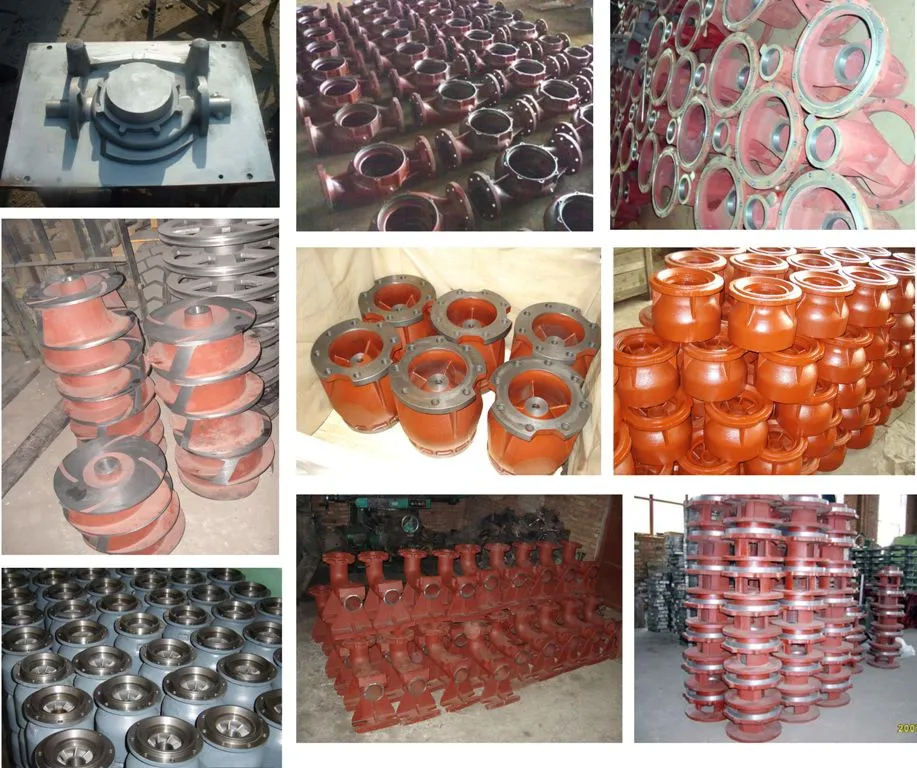Mobile:+86-311-808-126-83
Email:info@ydcastings.com
The Role Of Pump Casing Design In Optimizing Hydraulic Efficiency
Pump casing design plays a pivotal role in the overall performance and efficiency of pumps, particularly in optimizing hydraulic efficiency. As the outer shell that encloses the pump's internal components, the casing is responsible for directing fluid flow, maintaining pressure, and minimizing energy losses. A well-designed pump casing can significantly enhance hydraulic efficiency, leading to lower operational costs and improved reliability. This article explores the critical aspects of pump casing design and its impact on hydraulic efficiency.
The Importance of Pump Casing Shape and Geometry
The shape and geometry of the pump volute casing are fundamental to achieving optimal hydraulic efficiency. The casing’s design must align with the specific requirements of the fluid being pumped, whether it’s water, chemicals, or slurries. For instance, a volute casing, with its gradually widening spiral shape, is designed to convert the velocity of the fluid into pressure efficiently. This design minimizes turbulence and ensures smooth fluid flow, which is essential for maintaining high hydraulic efficiency.
The volute casing’s geometry is particularly effective in centrifugal pumps, where the fluid enters the casing at high velocity. The gradual expansion of the casing allows the kinetic energy of the fluid to be converted into pressure energy with minimal energy loss. This conversion is critical in maintaining the desired flow rate and pressure while reducing the energy required to operate the pump. Additionally, the volute design helps in evenly distributing the pressure around the impeller, reducing radial forces and extending the pump's lifespan.
Double-volute casings, with two opposing volutes, are another design variation aimed at enhancing hydraulic efficiency. By balancing the hydraulic forces within the pump, double-volute casings reduce the load on the pump shaft and bearings, leading to smoother operation and reduced wear. This design is particularly beneficial in applications requiring high pressure or when handling fluids with varying flow rates.
Material Selection and Its Impact on Efficiency of Pump Casing
The choice of materials for pump casing construction is another critical factor in optimizing hydraulic efficiency. Materials must be selected based on the properties of the fluid being pumped, such as its temperature, corrosiveness, and abrasiveness. For instance, stainless steel or other corrosion-resistant alloys are often used in pumps handling aggressive chemicals or seawater, where maintaining the integrity of the casing is essential for long-term efficiency.
Materials with low surface roughness are also preferred in pump casing design, as they reduce frictional losses during fluid flow. Smooth internal surfaces ensure that the fluid moves through the pump with minimal resistance, thereby enhancing hydraulic efficiency. Additionally, advanced materials such as composites and ceramics are being explored for their ability to provide high strength-to-weight ratios and superior wear resistance, further contributing to efficiency gains.
The durability of the casing material directly impacts the pump's operational efficiency over time. A casing that resists corrosion, erosion, and wear will maintain its hydraulic performance longer, reducing the need for frequent maintenance and replacements. This longevity is especially crucial in industrial applications where downtime can be costly.
The Role of Sealing Mechanisms About Pump Casing
Sealing mechanisms within the pump casing are vital for preventing fluid leakage, which can significantly affect hydraulic efficiency. Leakage not only leads to energy losses but can also cause damage to other pump components, reducing overall efficiency and increasing maintenance costs. The design of seals and gaskets must be meticulously planned to ensure a tight fit and reliable performance under varying pressure and temperature conditions.
Labyrinth seals, mechanical seals, and O-rings are common sealing solutions used in pump casings. Each type of seal has its advantages, depending on the application. For instance, mechanical seals are highly effective in preventing leakage in high-pressure applications, while labyrinth seals are better suited for minimizing leakage in lower-pressure environments. The selection of the appropriate sealing mechanism is critical in maintaining hydraulic efficiency by ensuring that the pump operates within its designed parameters.
Advanced sealing technologies, such as non-contact seals and magnetic seals, are being developed to further enhance the reliability and efficiency of pump casings. These innovations aim to reduce friction and wear, thereby extending the life of the pump and maintaining its hydraulic performance over a longer period.
The Influence of Casing Thickness and Rigidity of Pump Casing
The thickness and rigidity of the pump casing are crucial factors that influence hydraulic efficiency. A casing that is too thin may not withstand the pressures exerted by the fluid, leading to deformation, leaks, or even catastrophic failure. Conversely, a casing that is overly thick can add unnecessary weight and material costs without significantly improving performance.
Optimizing casing thickness involves a careful balance between structural integrity and material efficiency. Computational fluid dynamics (CFD) simulations are often used in the design phase to model the stress distribution within the casing and identify areas where material can be minimized without compromising strength. This approach not only enhances hydraulic efficiency by reducing the overall weight of the pump but also contributes to cost savings in material and manufacturing.
Rigid casings are essential for maintaining the precise alignment of internal components, such as the impeller and shaft. Any flexing or deformation of the casing can lead to misalignment, resulting in increased friction, vibration, and energy loss. By designing casings with appropriate rigidity, manufacturers can ensure that the pump operates smoothly and efficiently under all operating conditions.

-
Materials Used in Manufacturing Cap End Pipe FittingsNewsNov.24,2025
-
Material Properties of CF8M CastingNewsNov.24,2025
-
How to Inspect Pump Cap Ends for DamageNewsNov.21,2025
-
Backward Curved Impeller – Efficient Airflow Solutions for Industry | YD CastingsNewsNov.21,2025
-
Automobile Water Pump - Efficient, Quiet, Durable & ElectricNewsNov.21,2025
-
Impeller for Pumps – High-Efficiency, Durable, OEM-ReadyNewsNov.21,2025











